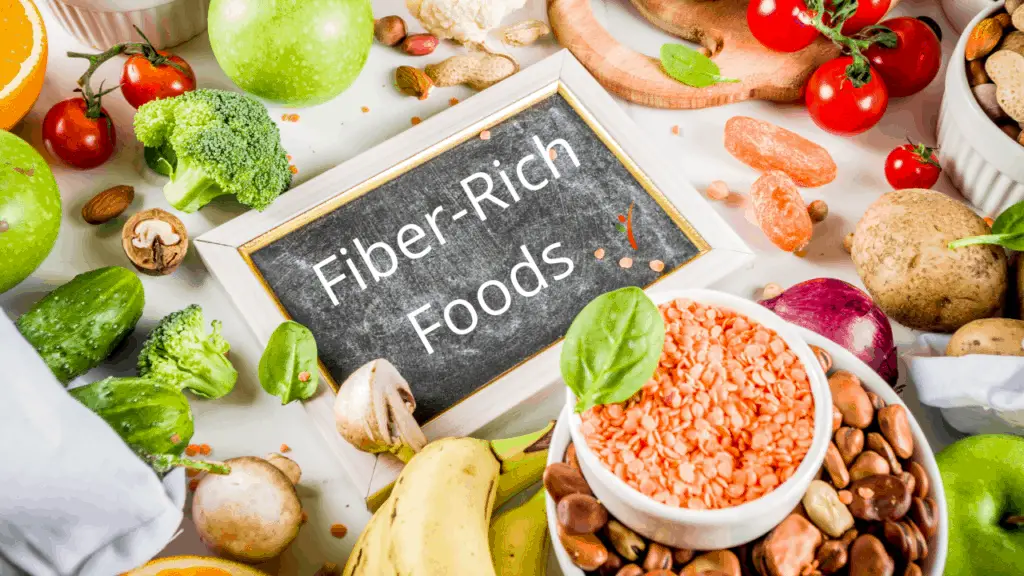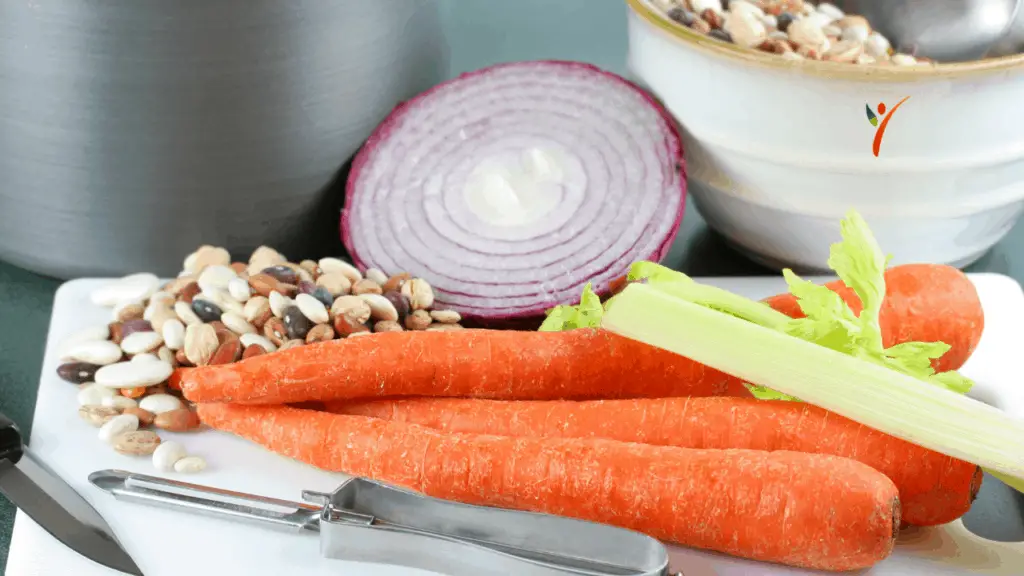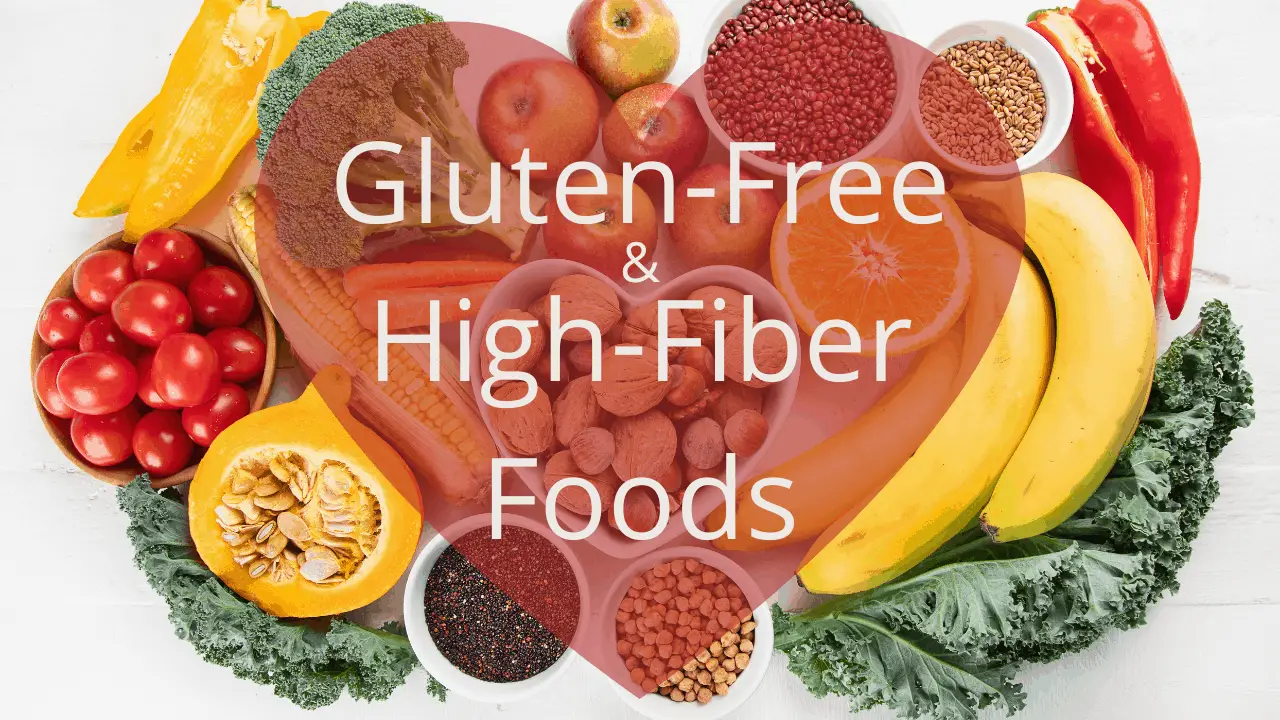Dietary fiber is the overlooked sideliner from the essential food nutrients for the body by most. The fact is that excluding fiber from your meals no matter whatever the reason is an unwise choice, and your nutritionist or naturopathic doctor will add it right back in, first thing, during your next visit.
If you are a gluten-free dieter, as with all other foods, you may scrutinize each fiber-rich food. Since you're already excluding the main fiber-rich foods like wheat bread and cereals from your diet, you may not be able to notice the fiber deficiency until it's too late.
Taking timely steps to balance your diet is fundamental to physical health, and leaving it out isn't an option. Here's everything you need to know on including high-fiber foods on a gluten-free diet:
Defining Fiber
Fiber isn't like other nutrients that get absorbed in the body and provide energy that gets you going through the day. Fiber is the nutritional component is solely plant-based foods, meaning you can't get fiber no matter how much meat, seafood, or poultry you're eating.

Neither does overloading your body with dairy products in the hope of reviving the body's fiber levels work because there isn't fiber in dairy either. Now, with plant-based foods, the fiber in them is excreted out as your body absorbs the remaining nutrients from the food. So, what's the purpose?
In simplified terms, fiber, also known as bulk or roughage, is the excreted nutrient that keeps your digestive system healthy. We'll discuss the benefits in detail later; let's focus on the types for now. Fiber comes in two forms, the soluble fiber and the insoluble one.
- Soluble Fiber: As the name suggests, is the water-soluble type. While passing through the digestive tract, soluble fiber dissolves in water and changes its texture into a gel-like form. During this journey, this fiber provides a small number of calories to the body.
2. Insoluble Fiber: Our bodies do not digest insoluble fiber at all. Instead, it passes through the digestive tract in its original form. Neither water nor gastrointestinal fluids are capable of dissolving this fiber. It makes you wonder why eat insoluble fiber at all if your body doesn't get any nutrients from it? Insoluble fiber is as essential for a healthy digestive tract as soluble fiber for a healthy excretory system.
Gluten-Free Fiber-Rich Foods
Gluten-free whole grains and natural foods are the best way to include fiber in your meals. Most of these ingredients have a combination of soluble and insoluble fibers. It goes out without saying that adding fiber-rich foods to your diet will likely provide your body with an adequate amount of both fiber types.

Some foods are higher in soluble fiber amounts, while others contain an increased portion of insoluble fibers. Balancing fiber-rich foods ensures that you're attaining the best of both worlds without missing out on either fiber. The following foods are gluten-free, fiber-rich, and healthy for your body.
Soluble Fiber Foods:
| Ingredient | Dietary Fiber | Daily Value |
| Black Beans (1 cup, cooked) | 15 g | 50% |
| Lima Beans (1 cup, boiled) | 13 g | 43% |
| Brussel Sprouts (1 cup) | 3.3 g | 11% |
| Kidney Beans (1/2 cup, raw) | 23 g | 77% |
| Apples (1 cup) | 2.6 g | 8.6% |
| Pears (1 cup) | 5.1 g | 17% |
| Oranges (1 cup) | 4.3 g | 14% |
| Sweet Potatoes (1 cup) | 4 g | 13% |
| Broccoli (1 cup, raw) | 2.3 g | 7.6% |
| Eggplant (1 cup) | 2.5 g | 8.3% |
| Avocados (1 cup) | 10 g | 33% |
| Ground Flax Seeds (1 tbsp) | 2.8 g | 9.3% |
Insoluble Fiber Foods:
| Ingredients | Dietary Fiber | Daily Value |
| Green Peas (1 cup) | 7 g | 23% |
| Parsnips (1 cup) | 7 g | 23% |
| Celery (1 cup) | 5 g | 16.6% |
| Cucumber (300-gram, raw) | 2 g | 6.6% |
| Oats (1 cup) | 7.5 g | 25% |
| Quinoa (1 cup) | 5 g | 16.6% |
| Coconut (shredded) | 7 g | 23% |
| Cauliflower (1 cup, chopped) | 2.1 g | 7% |
| Spinach (1 cup, boiled) | 4.32 g | 14.4% |
| Almonds (1 cup, whole) | 16 g | 53% |
| Soybeans | 13.9 g | 46% |
Why is Fiber Important?
Fiber works in several ways to maintain proper physical health. Several beneficial gut bacteria perform vital functions that our body cells are incapable of doing. These bacteria, like us, need food, and they'll eventually die if they don't. They use fiber as their primary dietary source. Moreover, fiber helps significantly reduce weight, and researchers have proved this experimentally.

A series of medical researches were carried out in 2017 to prove that people who have a high intake of dietary fiber have a lesser chance to develop cardiovascular problems while decreasing the frequency of mortality due to these conditions. You pass better stool with more ease. You can also increase your daily fiber intake to protect yourself from developing diabetes, primarily type 2 diabetes.
Avoiding Gluten-Based High-Fiber Foods
Most high-fiber foods are natural products that do not contain any gluten. The problem occurs when you move to processed foods or gluten-based whole grains. Undoubtedly, whole grains are the usual choice for including fiber in your daily diet, but it's not something you can eat if you are a gluten-free dieter.

We're not suggesting eliminating all whole grains and their derived products from your diet. But you must exclude any wheat, rye, barley, and spelt from your diet and continue adding balanced portions of other whole grains, fruits, vegetables, and lentils.
How to Include Fiber to a Gluten-Free Diet?
In a typical case, a nutritionist or medical consultant suggests adding whole grains like wheat-based foods to increase fiber intake. As a gluten-free dieter, wheat is not an option, and this makes a high-fiber diet a little harder for these dieters to regulate and manage.

Gluten-free products that are substitutes for the traditional versions are loaded with refined products and low on fiber. Bear in mind, we're not talking about gluten-free whole grains here, but processed foods that leave nutrition behind.
Gradually Increase the Intake of Fiber
Adding fiber back to your diet, especially if your fiber consumption has been low for some time, is a gradual process, and you shouldn't accelerate it immediately. When the body is unaccustomed to fiber for some time, an instant excessive intake can cause various digestive issues.

And since these digestive problems correlate with celiac disease and gluten sensitivity, it can become confusing. You wouldn't want the overburdening thoughts of whether something in your food triggers your gluten intolerance when it's just fiber. Therefore, slow and steady wins the race, and that's what we're aiming for when trying to regain the daily required fiber intake.
Meeting the DV (Daily Values) Goal
Here's how you can gradually meet your daily fiber intake goal. Firstly, start by consuming low quantities of fiber regularly. For instance, add a portion of brown rice to one meal of the day on day 1, black beans the next day, coconut flour muffins on the third day, and so on.
Ensure that you eat small amounts in one meal in the beginning. Then, slowly add more fiber in a single serving or include fiber-rich foods to more meals per day. Once you reach the goal, maintain a balanced fiber intake from there on forward.

Don't Leave Out the Fluids
Now, a consistent fiber intake isn't the only integral aspect of a fiber-rich diet. Too much fiber without the required fluid intake can also set your body off-balance and result in constipation. To guarantee a functional gastrointestinal system, drink eight glasses of water, especially after you're back to the daily fiber quantity.
Avoid Eating Processed Foods
Processed gluten-free foods eliminate gluten but aren't cut out for the nutritional diet. Processed foods lack nutrition values and typically add more things like sugar to them. So, making a habit of eating only or most processed foods on a gluten-free diet will destroy your body.
Choose healthier options by adding natural products and whole foods to your diet. Whole grain gluten-free flours can be your companions for baking, while the grains themselves are perfect as a side serving to your meals. If you're not a fan of whole grains at all, there remain several options for high-fiber intake that aren't processed, including seeds, nuts, legumes, fruits, and vegetables.

Final Words
On a gluten-free diet, you need to keep your body in balance. Working towards balancing your nutritional intake. You don't want to have stomach pains and issues that make you constipated—so keep in mind that every “body” needs fiber to stay healthy. Keep it simple and add just a small side serving of any gluten-free high-fiber food at each meal.
This, in turn, will help you stay healthy, my friends!





